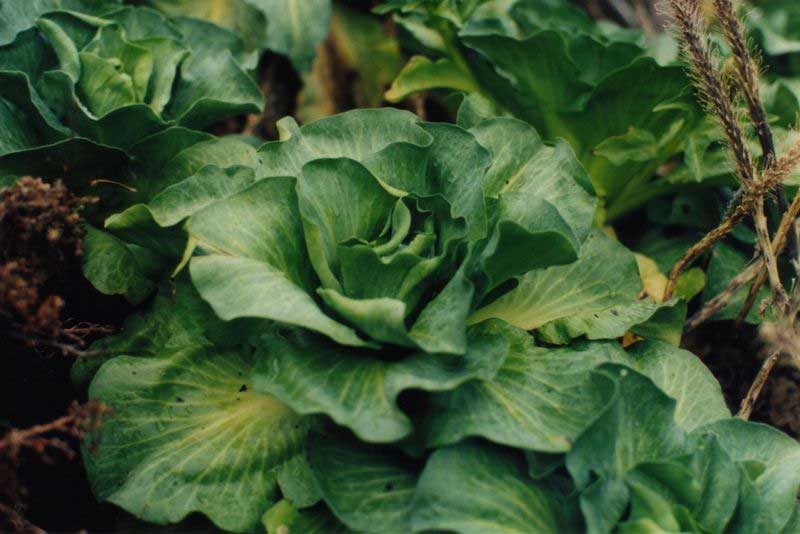
Pringlea antiscorbutica (*)
Classification System: APG IV
Superregnum: Eukaryota
Regnum: Plantae
Cladus: Angiosperms
Cladus: Eudicots
Cladus: Core eudicots
Cladus: Rosids
Cladus: Eurosids II
Ordo: Brassicales
Familia: Brassicaceae
Genus: Pringlea
Species: Pringlea antiscorbutica
Name
Pringlea antiscorbutica R.Br. ex Hook.f.
References
Brown, R., 1845. Fl. Antarct. 2:239, t. 90, 91.
The NCBI taxonomy database. NCBI. Pringlea antiscorbutica
Germplasm Resources Information Network (GRIN). [1]
Links
Koch, M.A. et al. 2019. Pringlea antiscorbutica in BrassiBase Tools and biological resources to study characters and traits in the Brassicaceae. Published on the internet. Accessed: 2019 Jun 13.
International Plant Names Index. 2019. Pringlea antiscorbutica. Published online. Accessed: Jun 13 2019.
The Plant List 2013. Pringlea antiscorbutica in The Plant List Version 1.1. Published on the internet. Accessed: 2019 Jun 13.
Tropicos.org 2019. Pringlea antiscorbutica. Missouri Botanical Garden. Published on the internet. Accessed: 2019 Jun 13.
Vernacular names
Afrikaans: Kerguelenkool
català: Col de Kerguelen
Deutsch: Kerguelenkohl
English: kerguelen cabbage
eesti: Kergueleni saarekapsas
suomi: Kergueleninkaali
français: Chou de Kerguelen
Nederlands: Kerguelenkool
norsk: Kerguelenkål
русский: Кергеленская капуста
中文: 凱爾蓋朗甘藍
Pringlea antiscorbutica, commonly known as Kerguelen cabbage, is a flowering plant and the sole member of the monotypic genus Pringlea in the family Brassicaceae. Its common name comes from the archipelago of its discovery, the Kerguelen Islands, and its generic name derives from Sir John Pringle, President of the Royal Society at the time of its discovery by Captain James Cook's Surgeon, William Anderson in 1776.
Description
Pringlea has leaf rosettes of up to 45 cm in diameter, that sit on top of perennial half woody stems of about 15 cm thick and up to 1 m long. The erect flowering stems remain on the plants for many years.[1]
Distribution
The species grows on the remote Heard Island and McDonald Islands, Crozet, Prince Edward and Kerguelen Islands.[2] The ancestor of P. antiscorbutica probably migrated from South America some five million years ago.[3]
Kerguelen cabbages on Mayes island (Kerguelen Islands)
Ecology
The home islands of Kerguelen cabbage are at roughly 50° South Latitude and constantly buffeted by strong winds, making the islands unfavorable for wind pollination, except on infrequent mild days. This climate, plus the absence of potential insect pollinators, means the Kerguelen cabbage can only survive through a process of self-pollination.[2]
An old Kerguelen cabbage on the Péninsule Rallier du Baty, Kerguelen Island
The plants grow to a diameter of about 50 cm in around four years, and flower for the first time in their third or fourth year.[4] At the mature stage, this species exhibits several adaptations linked to cold tolerance such as high polyamine levels.[5][6] Pringlea has a very high leaf water content (above 83%) and the waterflow from the root to the leaves is very easy, which is no problem since soil water content on the distribution area of Kerguelen cabbage is permanently high. This implies that successfully growing this species elsewhere is difficult.[7]
Uses
The plant is edible, containing high levels of potassium. Its leaves contain a vitamin C-rich oil, a fact which, in the days of sailing ships, made it very attractive to sailors suffering from scurvy, hence the species name's epithet antiscorbutica, which means "against scurvy" in Low Latin. It was essential to the diets of the whalers on Kerguelen when pork, beef, or seal meat was used up. In May 1840, botanist Joseph Dalton Hooker was the first to make a technical analysis of the plant, and to assign the Latin name.[8]
Hooker also reported having eaten some soup that had been made with Kerguelen cabbage, and described the raw leaves as tasting like cress, the boiled leaves as tasting like "stale" cabbage, and the root as tasting like horseradish.[9]
Conservation
The micropezid fly species Calycopteryx mosleyi is associated with this plant. Rabbits which were introduced on the Kerguelen around 1874, feed on the cabbage, and the plant is now limited to locations that cannot be accessed by them. Fortunately, rabbits are not present on all islands.[1]
References
Thieret, J.W.; Young, S.B. (1988). "The Kerguelen-Cabbage, Pringlea antiscorbutica (Brassicaceae)". Economic Botany. 42 (2): 288–291.
Schermann-Legionnet, Agnes; Hennion, Françoise; Vernon, Philippe & Atlan, Anne (2007). "Breeding system of the subantarctic plant species Pringlea antiscorbutica R.Br. and search for potential insect pollinators in the Kerguelen Islands" (PDF). Polar Biology. 30 (9): 1183–1193. doi:10.1007/s00300-007-0275-1. Retrieved 2015-10-15.
Bartish, I.V.; Ainoushe, A.; Jia, D.; Bergstrom, D.; Chown, S.L.; Winkworth, R.C. & Hennion, F. (2012). "Phylogeny and colonization history of Pringlea antiscorbutica (Brassicaceae), an emblematic endemic from the South Indian Ocean Province". Molecular Phylogenetics and Evolution. 65 (2): 748–756. doi:10.1016/j.ympev.2012.07.023. PMID 22871399.
Chapuis, J.-L.; Hennion, F.; Le Roux, V. & Le Cruziat, J. (2000). "Growth and reproduction of the endemic cruciferous species Pringlea antiscorbutica in Kerguelen Islands". Polar Biology. 23 (3): 196–204. doi:10.1007/s003000050027.
Hummel, Irène; Couée, Ivan; El Amrani, Abdelhak; Martin‐Tanguy, Josette & Hennion, Françoise (2002). "Involvement of polyamines in root development at low temperature in the subantarctic cruciferous species Pringlea antiscorbutica". Journal of Experimental Botany. 53 (373): 1463–1473. doi:10.1093/jxb/53.373.1463.
Hummel, Irène; Quemmerais, Frédéric; Gouesbet, Gwenola; El Amrani, Abdelhak; Frenot, Yves; Hennion, Françoise & Couée, Ivan (2004). "Characterization of environmental stress responses during early development of Pringlea antiscorbutica in the field at Kerguelen". New Phytologist. 162 (3): 705–715. doi:10.1111/j.1469-8137.2004.01062.x. JSTOR 1514567.
Dorne, A.J.; Bligny, R. (1993). "Physiological adaptation to subantarctic climate by the Kerguelen cabbage, Pringlea antiscorbutica R. Br". Polar Biology. 13: 55–60.
Hooker, J.D. (1845). "Table XC-XCI". The botany of the Antarctic voyage of H.M. discovery ships Erebus and Terror in the Years 1839–1843: Under the command of Captain Sir James Clark Ross. 1. p. 239 – via BioDiversityLibrary.org.
Short, Philip (2004). In Pursuit of Plants. Timber Press. pp. 297–299.
Retrieved from "http://en.wikipedia.org/"
All text is available under the terms of the GNU Free Documentation License

